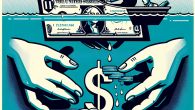
Does Abenomics Still Serve As a Viable Model for Stimulus?
The Subtle Art of Central Bank Signaling: Decoding Monetary Policy in a Volatile Market
In the often opaque and jargon-laden world of global markets, the discernment of central bank intentions is nothing short of an intellectual sport. One that requires patience, precision, and a penchant for decoding what’s not being said just as much as what is. Welcome to the subtle — and occasionally theatrical — art of central bank signaling.
I’m Dr. Alistair P. Whitmore, and today we’re donning our monocles (figuratively, of course) to assess how central banks communicate crucial decisions in an increasingly volatile macroeconomic landscape. Pour yourself a strong cup of coffee — or something stronger if your portfolio prefers European equities — and let’s begin our expedition.
What Is Monetary Policy Signaling, Really?
A central bank doesn’t just tweak interest rates and fiddle with the money supply because it enjoys meddling in bond markets. No, it does so with purpose — and it usually drops bread crumbs along the way. These crumbs are what we call monetary policy signals: the hints, nudges, and occasionally blunt instruments used by institutions like the Federal Reserve, European Central Bank, or Bank of Japan to prepare markets for upcoming changes.
Think of it like a game of chess, only the pieces are GDP reports, inflation metrics, and yield curves. Signaling helps prevent monetary policy from becoming too abrupt or jarring. Imagine a Fed rate hike with no prior indication — markets would detonate like a soufflé under punk rock vibrations.
The Tools of the Signaling Trade
How do central banks do this? Subtly. And sometimes not-so-subtly. Here are their favorite tools:
- Forward Guidance: Formal statements about the future path of interest rates or inflation targets. These are the “we may raise rates in the near future” kinds of comments.
- Speeches and Press Conferences: When a central banker like Jerome Powell clears his throat, risk analysts take notes.
- Meeting Minutes and Reports: Delayed but detailed, these documents give markets something to obsess over when tea leaves aren’t enough.
- Economic Projections: Updates on GDP, inflation, and unemployment forecasts offer a window into internal thinking.
- Market Operations: Sometimes, actions speak louder than dovish or hawkish words.
The Art of Reading Between the Lines
Here’s where it becomes deliciously complex. A phrase as simple as “moderate growth” can send bond yields fluttering. When the ECB drops “still necessary” from its vocabulary, it may be signaling the end of asset purchases. It’s like literary criticism, but with recurring angst about CPI and core inflation.
Central banking language is measured, intentional — and sometimes delightfully vague. Ambiguity is a feature, not a bug. Why? Because flexibility is power. If markets commit too strongly to a central bank’s guidance, and reality diverges, reputational and financial consequences abound.
Case Study: The Taper Tantrum of 2013
Let’s rewind to May 2013. Then-Fed Chair Ben Bernanke hinted, during a Congressional hearing no less, that the Fed might soon reduce (“taper”) its bond-buying program. It wasn’t an official announcement, just a suggestion. Markets, however, erupted. Yields spiked. Emerging markets wobbled. The USD flexed its muscles like a linebacker at a squash tournament.
This was textbook signaling — and market overreaction. It demonstrated both the potency and the delicacy of forward guidance. Since then, most central banks have made efforts to telegraph their intentions more methodically.
Why This Matters in a Volatile Market
Today’s economic climate is a buffet of contradictions: high inflation fighting with tepid wage growth, escalating public debt meets market exuberance, and geopolitical tensions roil consumer sentiment. In such an environment, investors hang on every syllable of central bank communication like students cramming for a final exam written in Latin.
Why is deciphering these signals so crucial? Because it provides insight into:
- Interest Rate Outlooks: Knowing whether rates will rise or fall can substantially impact bond portfolios, loan costs, and equity valuations.
- Inflation Expectations: This affects real returns on investments and the purchasing power of currencies.
- Risk Appetite: When central banks are supportive (i.e., dovish), risk-on sentiment thrives. When they tighten (i.e., hawkish), flight to safety gains traction.
Misinterpretation Has Consequences
Misjudging central bank signals can lead to poor investment decisions, volatility spikes, or worse — a loss of credibility. Just ask the Bank of England, which in 2021 repeatedly hinted at a forthcoming rate hike, only to leave rates untouched. The result? Markets felt misled; sterling stumbled.
The Global Perspective: Not All Central Banks Speak the Same Dialect
Much like measuring GDP across different countries, interpreting central bank tone requires contextual fluency. A hawkish Federal Reserve may not line up neatly with a dovish Bank of Japan — and sometimes what’s considered “neutral” by the ECB has a whiff of tightening austerity across the Atlantic.
Key differences lie in:
- Mandates: The Fed’s dual mandate (price stability and employment) is distinct from the ECB’s price stability obsession.
- Market Structure: Capital markets in the U.S. react differently to guidance than in Asia, where bank lending plays a bigger role.
- Communication Styles: Some banks, like the Reserve Bank of New Zealand, are blunt. Others, like the Swiss National Bank, prefer to whisper sweet nothings behind neutral language.
Tips for Investors and Analysts
For those looking to navigate this landscape with some semblance of sanity, I offer these tools:
- Track Central Bank Calendars: Know when meetings, speeches, and data releases occur.
- Read Original Statements: Don’t rely solely on media interpretations. Read the raw text.
- Watch for Language Shifts: Pay attention to specific phrases that are notably added or removed.
- Context is King: A dovish statement amidst 8% inflation may not mean rate cuts are coming.
And most importantly, diversify assumptions just as you would diversify asset classes.
Final Thoughts
At its best, central bank signaling creates a roadmap — albeit one drawn in charcoal rather than ink. At its worst, it’s a mirage in a macroeconomic desert. For analysts, economists, and wistful retail investors alike, the skill lies in treating these signals not as gospel, but as guideposts.
We live in an age when a cough from a central banker can move trillions. Rather than fret, I suggest you embrace the theater, immerse in the nuance, and understand that central bank communication is less about clarity, more about calculated ambiguity. It is, after all, an art — and one that’s endlessly fascinating.
To connect with us or explore more insights, visit our About Us page or Contact Us.









Leave a Reply